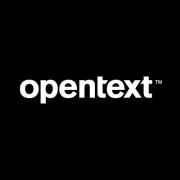A Configuration Management Database (CMDB) is an essential IT management tool that helps organizations track and manage IT assets, services, and their interdependencies.
The top 5 Configuration Management Database solutions are ServiceNow CMDB, Qualys VMDR, OpenText Universal Discovery and Universal CMDB, Device42 and BMC Atrium CMDB, as ranked by PeerSpot users in March 2025. OpenText Universal Discovery and Universal CMDB received the highest rating of 9.0 among the leaders. Qualys VMDR is the most popular solution in terms of searches by peers, and ServiceNow CMDB holds the largest mind share of 41.7%.
CMDB solutions provide organizations with a centralized repository of data, enabling better visibility and control over IT environments. By maintaining accurate information about hardware, software, and systems, businesses can improve decision-making and streamline IT operations, leading to increased efficiency.
What are the critical features of a CMDB?
- Asset Management: Comprehensive tracking of all IT assets and their relationships.
- Change Management: Facilitates the management of IT changes with minimal disruption.
- Incident Management: Helps to quickly identify and resolve IT issues based on configuration data.
- Reporting and Analytics: Provides data-driven insights for better decision-making.
- Automated Discovery: Automatically updates the database with the latest asset information.
What benefits and ROI can users expect?
- Improved IT Efficiency: Reduces the time and effort required to manage IT assets and services.
- Enhanced Visibility: Offers a holistic view of the IT environment, enabling better planning.
- Cost Savings: Optimizes resource utilization and minimizes redundant assets.
- Risk Management: Identifies potential risks and ensures compliance with industry standards.
- Better Decision Making: Provides accurate and up-to-date information for strategic IT decisions.
In industries like finance, healthcare, and manufacturing, CMDB solutions help meet regulatory requirements, track sensitive data, and ensure high availability of critical systems. They also support ITSM practices by providing a structured approach to managing IT infrastructure.
Configuring a CMDB is helpful for organizations in maintaining a clear, accurate, and real-time understanding of their IT landscape. This centralized database supports better resource management, reduces downtime, and aligns IT operations with business goals.










